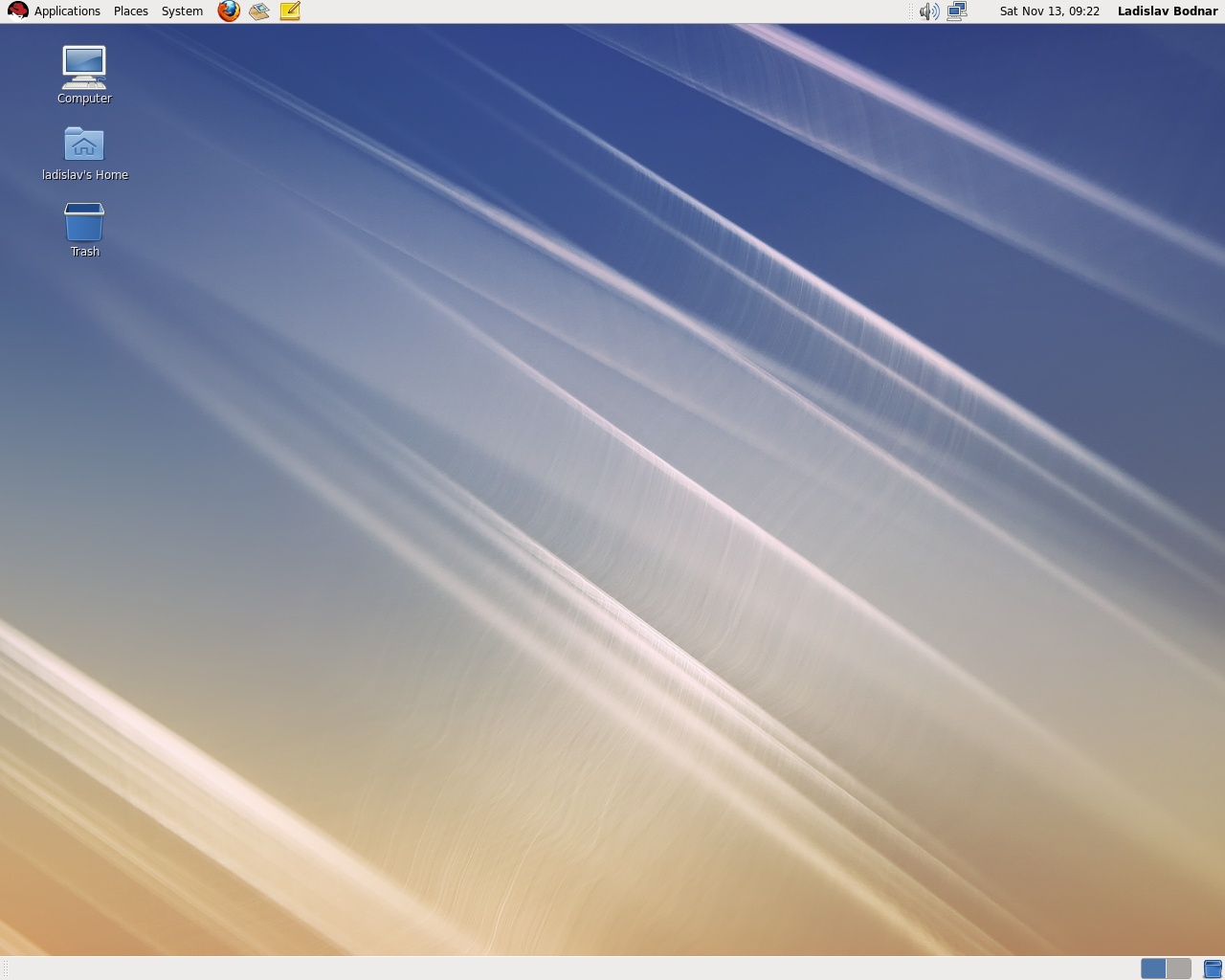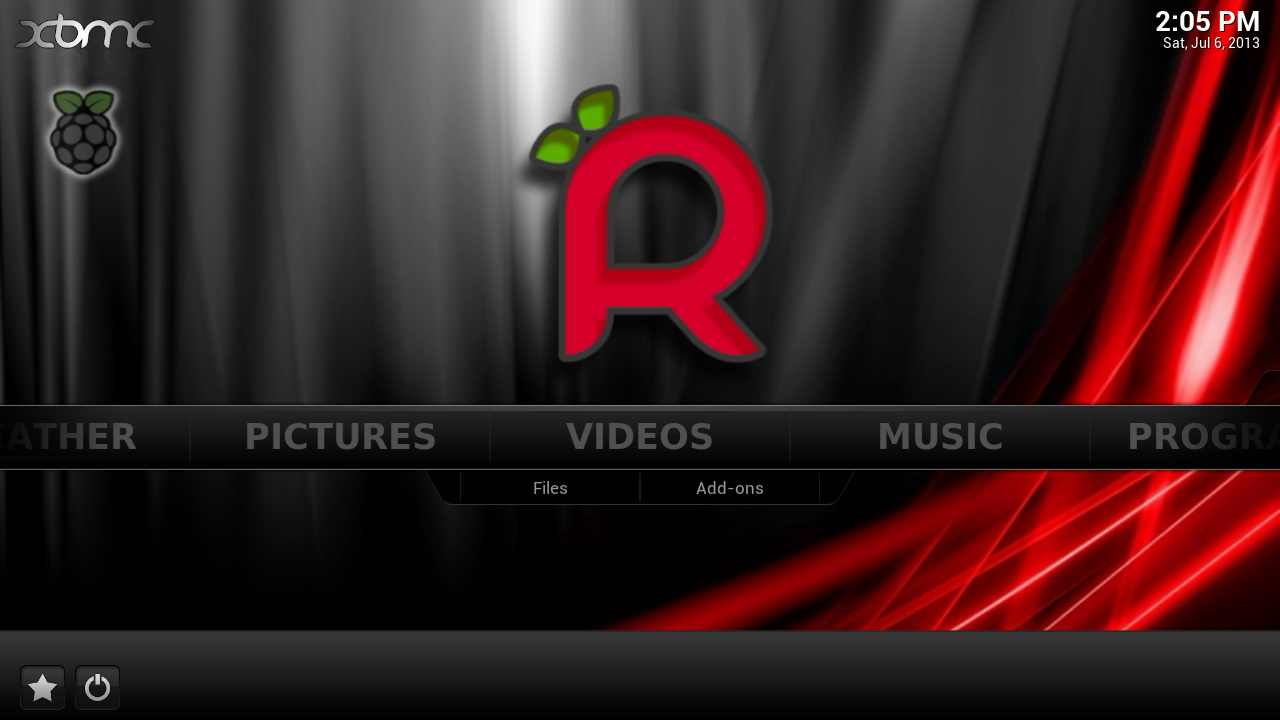Red Hat Enterprise Linux 5/6 is an old, yet still supported branch of the award winning and highly acclaimed RHEL (Red Hat Enterprise Linux) operating system, a distribution of Linux developed and published by the powerful Red Hat company.
The distribution formerly known as Red Hat Linux
While being distributed for free, under the name of Red Hat Linux, the project is now a commercial Linux distribution sold by subscription. The development of Red Hat Linux stopped at version 9 in the year 2003, when the Fedora project was born, along with Red Hat Enterprise Linux.
Supports a wide range of computer platforms
Red Hat Enterprise Linux is available for purchase as both desktop and server editions, an OpenStack platform, as well as flavors for the IBM POWER and IBM System z platforms. The mainstream 32-bit (i386) and 64-bit (x86_64) hardware platforms are supported by default.
Traditional, productive and easy to use desktop environment
The Red Hat Enterprise Linux 5 OS is built around the GNOME Classic graphical desktop environment, which uses an old-school two-panel layout, providing users with a traditional, productive and easy to use desktop session.
Default applications
Among the pre-installed applications on the desktop edition, we can mention the LibreOffice office suite, Mozilla Firefox web browser, Mozilla Thunderbird email and news client, GIMP image editor, K3b CD/DVD burning tool, Inkscape vector graphics editor.
On the other hand, the server edition comes with powerful open source software projects, such as MariaDB, PostgreSQL, OpenSSH, OpenSSL, OpenJDK, Samba, Postfix, Perl, Python, PHP, Qt and systemd
Bottom line
Overall, RHEL is a pioneer distribution of Linux, it uses the RPM Package Manager solution for installing, updating and removing packages from the system. Unfortunately, no live version is available for purchase, which means that the user must install it on a local drive in order to use it, using the easy-to-use Anaconda graphical installer.
What is new in this release:
- System Security:
- Emphasizing the platform's commitment to stable and secure enterprise systems, Red Hat Enterprise Linux 6.7 helps prevent data leakage by allowing read-only mounting of removable media. In addition, Red Hat Enterprise Linux 6.7 now includes the Security Content Automation Protocol (SCAP) Workbench, an easy-to-use tool that functions as a SCAP scanner and delivers tailored SCAP content functionality. SCAP Workbench, building upon existing SCAP functionality in Red Hat Enterprise Linux 6, allows customers to measure the compliance of their Red Hat Enterprise Linux systems against their own company-specific security guidelines and criteria.
- Red Hat Access Insights:
- To enhance the reliability of IT deployments, Red Hat Enterprise Linux 6.7 is compatible with Red Hat Access Insights, a new hosted service from Red Hat designed to help customers proactively identify and resolve issues that could impact business operations. Leveraging the extensive knowledge of Red Hat Certified Engineers and Red Hat's award-winning customer support team, Red Hat Access Insights alerts IT administrators to potential problems, like configuration issues or vulnerabilities, and provides a dashboard to help identify, understand and correct these issues before any disruption occurs.
- Linux Innovation:
- Red Hat Enterprise Linux 6.7 incorporates many of the latest, stable open source technologies, allowing enterprises to confidently deploy recent innovations across physical, virtual and cloud environments. One example is clufter, a tool for analyzing and transforming cluster configuration formats. Available as a technology preview, clufter enables system administrators to update existing high-availability configurations to run on the latest high-availability tools from Red Hat. LVM Cache is now a fully supported feature, allowing users to maximize the performance benefits of SSD-based storage for their business needs while limiting associated costs. Additionally, a Red Hat Enterprise Linux 6.7 base image is now available via the Red Hat Customer Portal, enabling Red Hat customers to transform traditional workloads into container-based applications that are suitable for deployment on Red Hat certified container hosts, including Red Hat Enterprise Linux 7, Red Hat Enterprise Linux Atomic Host, and OpenShift Enterprise 3 by Red Hat.
What is new in version :
- Better processor allocation for tasks that require dedicated processor time. Modern systems have multiple processors and certain demanding workloads typically prioritize a dedicated processor at all times rather than efficiently sharing processor time with other applications and services. The introduction of on-demand vmstat workers in the kernel helps achieve more efficient CPU sharing and resource balancing.
- The ability to remotely manage local disk data security based on network identity, making the task easier and more secure.
- Enhancements to the storage management API (libStorageMgmt) now provide a vendor agnostic mechanism to query disk health and RAID configuration management.
- The introduction of conntrack-tools for better network connection tracking
- Enhancements to NetworkManager, facilitating better integration with external programs
- A new web-based user interface for Performance Co-Pilot, aiding in the management and analysis of network and system performance
- New tooling that aids in diagnostics and allows system administrators to easily gather key I/O metrics for device mapper devices.
What is new in version 7.3 / 7.4 Beta:
- Better processor allocation for tasks that require dedicated processor time. Modern systems have multiple processors and certain demanding workloads typically prioritize a dedicated processor at all times rather than efficiently sharing processor time with other applications and services. The introduction of on-demand vmstat workers in the kernel helps achieve more efficient CPU sharing and resource balancing.
- The ability to remotely manage local disk data security based on network identity, making the task easier and more secure.
- Enhancements to the storage management API (libStorageMgmt) now provide a vendor agnostic mechanism to query disk health and RAID configuration management.
- The introduction of conntrack-tools for better network connection tracking
- Enhancements to NetworkManager, facilitating better integration with external programs
- A new web-based user interface for Performance Co-Pilot, aiding in the management and analysis of network and system performance
- New tooling that aids in diagnostics and allows system administrators to easily gather key I/O metrics for device mapper devices.
What is new in version 7.2:
- Better processor allocation for tasks that require dedicated processor time. Modern systems have multiple processors and certain demanding workloads typically prioritize a dedicated processor at all times rather than efficiently sharing processor time with other applications and services. The introduction of on-demand vmstat workers in the kernel helps achieve more efficient CPU sharing and resource balancing.
- The ability to remotely manage local disk data security based on network identity, making the task easier and more secure.
- Enhancements to the storage management API (libStorageMgmt) now provide a vendor agnostic mechanism to query disk health and RAID configuration management.
- The introduction of conntrack-tools for better network connection tracking
- Enhancements to NetworkManager, facilitating better integration with external programs
- A new web-based user interface for Performance Co-Pilot, aiding in the management and analysis of network and system performance
- New tooling that aids in diagnostics and allows system administrators to easily gather key I/O metrics for device mapper devices.
What is new in version 7.1:
- Red Hat Enterprise Linux 7.1 offers improved development and deployment tools, enhanced interoperability and manageability, and additional security and performance features. As with all releases of Red Hat Enterprise Linux, these enhancements are delivered over a stable, secure, 10-year lifecycle backed by Red Hat's award-winning global support.
- Manageability and Interoperability:
- Red Hat Enterprise Linux 7.1 delivers significant functionality improvements for heterogeneous operating system environments, particularly for infrastructure that uses Active Directory. By integrating the Common Internet File System (CIFS) with SSSD, users can now gain native access to Microsoft Windows file and print services without having to rely on winbind. Logical Volume Management (LVM) now includes additional OpenLMI-based hooks to manage volume groups and thinly provisioned volumes. This release also includes integrated client-side functionality to communicate with Ceph block storage.
- Security and Access Management:
- Improvements to Identity Management (IdM) now provide the ability to implement strong one-time password (OTP) authentication through LDAP and Kerberos using software tokens (e.g. FreeOTP) and hardware tokens from leading third-party vendors. Additionally, the IdM access control framework has been enhanced for better control over read/write permissions and a new Certificate Authority (CA) management tool streamlines changes to CA certificates and trust chains.
- Development, Deployment and Performance:
- Red Hat Enterprise Linux 7.1 delivers new developer tools, including several related to Linux containers. The latest docker package is now included along with orchestration tooling through Kubernetes; also available are Red Hat Enterprise Linux 6 and Red Hat Enterprise Linux 7 base images, which provide certified, stable foundations upon which to build enterprise-grade containerized applications. Beyond containers, Red Hat Enterprise Linux 7.1 also includes OpenJDK 8, the latest version of the open source Java SE 8 platform.
- From a performance perspective, Red Hat Enterprise Linux 7.1 supports higher processor and memory limits, as well as additional features to improve the performance of applications and virtual machines, especially those running memory-intensive workloads. Red Hat Enterprise Linux 7.1 further enhances performance through the inclusion of an MCS locking mechanism to improve processor efficiency for large systems with sizable non-uniform memory access (NUMA) nodes.
- Additional Red Hat Enterprise Linux Offerings:
- Red Hat understands the needs of enterprise IT, from delivering applications faster through containerization to running time-sensitive workloads to gaining efficiency by standardizing across architectures. To better meet these requirements, the general availability of Red Hat Enterprise Linux 7.1 coincides with the launch of three specialized Red Hat Enterprise Linux offerings designed to address industry use cases or specific architectures. These are...
- Red Hat Enterprise Linux Atomic Host is also generally available today, using the tools and frameworks as delivered by Project Atomic. Created specifically with container-based workloads in mind, Red Hat Enterprise Linux Atomic Host offers a minimal-footprint, streamlined platform perfect for running Linux containers in an enterprise environment.
- Red Hat Enterprise Linux for Real Time is Red Hat's real-time computing platform for deadline-oriented and time-sensitive applications. Using a specialized version of the Red Hat Enterprise Linux 7 kernel that has been tuned to deliver consistent low-latency response times, Red Hat Enterprise Linux for Real Time retains the reliability, scalability, and performance of the world's leading enterprise Linux platform.
- Red Hat Enterprise Linux for Power, little endian brings Red Hat Enterprise Linux 7.1 to enterprises using the IBM Power Systems platform with support for POWER8 on IBM Power Systems based on little endian. Running on POWER8 offers higher performance especially for big data applications through multi-threading, more cache and greater data bandwidth, while little endian mode removes an application portability barrier and allows datacenters running Power Systems to leverage Red Hat's vast ecosystem of certified applications originally developed for x86 architecture. This also means that these certified applications can be more easily migrated between x86-based and POWER processor-based systems, giving customers the advantages of both architectures.
What is new in version 7.0 / 7.1 Beta:
- In June, we announced the general availability of Red Hat Enterprise Linux 7, effectively raising the bar for enterprise IT infrastructure and pushing the operating system into the role of being a critical infrastructure platform for the enterprise. Featuring a broad spectrum of significant new features and enhancements, Red Hat Enterprise Linux 7 is designed to not only meet the demands of today's modern datacenter but to tackle the next-generation IT requirements of tomorrow. From accelerating application delivery through containerization - to laying a stable foundation for the open hybrid cloud - Red Hat Enterprise Linux 7 continues to redefine the enterprise operating system.
- Today, we are pleased to build on the successful launch of Red Hat Enterprise Linux 7 with the beta availability of Red Hat Enterprise Linux 7.1, which delivers a number of enhancements and improvements to the world's leading enterprise Linux platform, with an emphasis on ease-of-use, improved manageability, security, and performance. Red Hat Enterprise Linux 7.1 beta also introduces support for POWER8 on IBM Power Systems (based on little endian) hardware architecture and gives customers even more choice on application deployment platforms.
- Ease-of-Use and Improved Manageability:
- Red Hat Enterprise Linux 7.0 streamlined system administration and system configuration through the introduction of OpenLMI - a unified management tooling and industry-standard management framework. Red Hat Enterprise Linux 7.1 beta enhances OpenLMI by adding new capabilities for managing storage and introducing support for thin provisioning in LVM (Logical Volume Manager). In addition, Red Hat Enterprise Linux 7.1 beta makes it easy for system administrators to access Ceph block storage devices "out-of-the-box" thanks to the inclusion of Ceph userspace components and the Ceph RADOS Block Devices (RBD) kernel module. And, for environments where Red Hat Enterprise Linux and Microsoft Windows live under the same roof, Red Hat Enterprise Linux 7.1 beta also includes improved interoperability through the integration of Common Internet File System (CIFS) with SSSD, providing native access to Microsoft Windows file and print services without relying on Winbind.
- Security:
- One of the most anticipated features of Identity Management (IdM) in Red Hat Enterprise Linux 7.1 beta is the ability to provide strong one-time password (OTP) authentication via LDAP and Kerberos protocols leveraging software tokens provided by FreeOTP (open source alternative to Google Authenticator) and hardware tokens provided by different vendors (like Yubico). The beta also introduces a new Certificate Authority (CA) management tool which makes it easy for customers using IdM to change a CA certificate and alter the trust chain.
- Additionally, Red Hat Enterprise Linux 7.1 beta includes Security Content Automation Protocol (SCAP) Security Guides which delivers both a written description of SCAP guidelines as well as a testing tool that automates the ability to evaluate compliance with security guidelines and pinpoint potential vulnerabilities on a given system. These SCAP Security Guides effectively reduce the complexity of ongoing compliance testing and enhance security assurance.
- Additional Application Deployment Options:
- Red Hat Enterprise Linux 7.0 enhanced application development, delivery, portability and isolation through increased Linux containers functionality, including Docker, across physical, virtual and cloud deployments as well as development, test, and production environments. Red Hat Enterprise Linux 7.1 beta bolsters these capabilities by providing customers access to the latest Docker package (version 1.2) and Red Hat Enterprise Linux platform images available through the Red Hat Enterprise Linux 7 Extras channel and Red Hat Customer Portal, respectively.
- Performance:
- Red Hat Enterprise Linux 7.1 beta builds on a host of "out-of-the-box" performance management features and capabilities, like tuned and performance profiles. In addition, new locking mechanisms have been implemented in the kernel that improve processor efficiency for large systems with sizable NUMA nodes.
- Additional Offerings:
- Red Hat Enterprise Linux 7.1 beta provides access to new real-time technology for workloads that require very precise and deterministic processing times. This capability is delivered via enhancements to the Linux kernel and additional userspace packages that can be overlayed on top of a stock Red Hat Enterprise Linux 7.1 beta installation.
- Additionally, for customers who are using the IBM Power Systems platform as part of their datacenter infrastructure, Red Hat Enterprise Linux 7.1 beta now includes support for POWER8 on IBM Power Systems (based on little endian). Running in little endian mode accelerates innovation on the Power platform by removing an application portability barrier and allowing customers utilizing IBM Power Systems to leverage the existing ecosystem of Linux applications as developed for the x86 architecture.




1 Comments
TRAORE 1 Dec 22
Je suis interesse